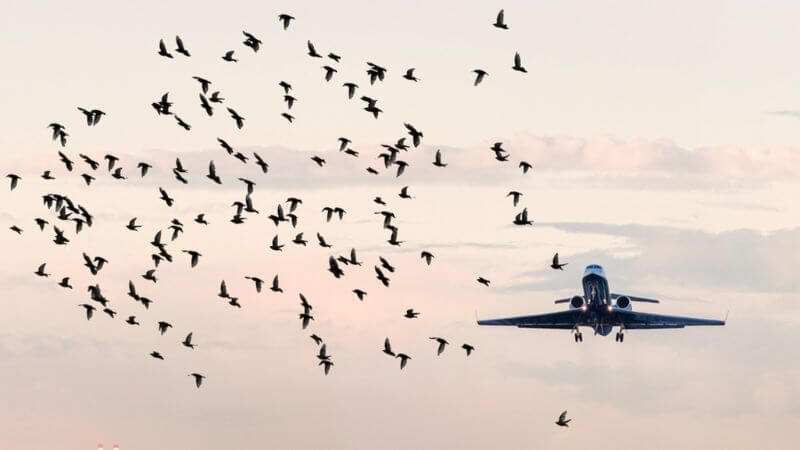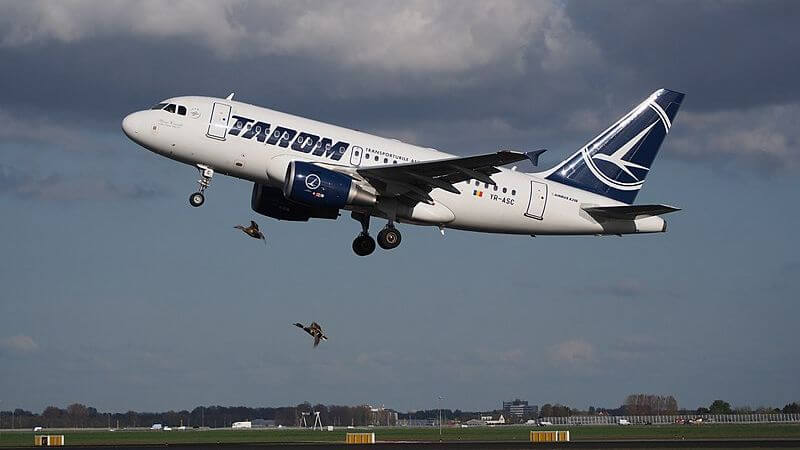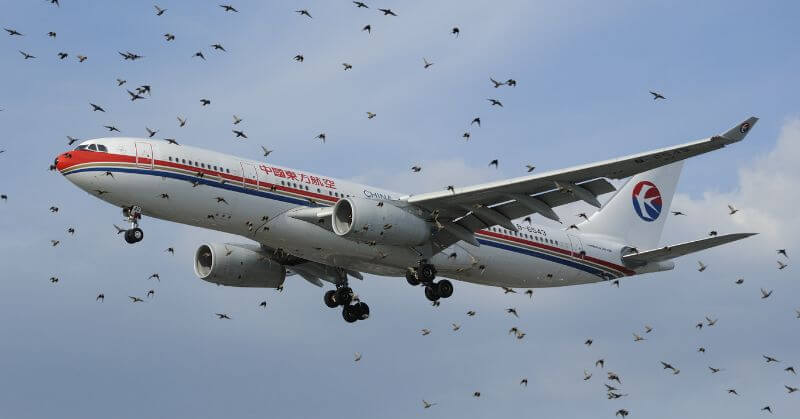It is essential to understand what are bird strikes. With each passing day, bird strikes are becoming a concern worth noting and talking about. This is because they majorly tamper with the safety and security of passengers and pilots traveling in an aircraft. What is worrisome to note is that India is one of those countries facing this issue of bird hits.
In order to control it and thereby get rid of it, the Directorate General of Civil Aviation (DGCA) and aviation authorities have come up with specific solutions. If you are curious to know about it all, then you are at the right place. Read on to know what are bird strikes and how they are dangerous for aviation industries.
What Is A Bird Strike?

There are plenty of terms to describe it. Bird ingestion, birds hit, or (BASH) Bird Aircraft Strike Hazards, to name a few. If we go to the simpler meaning, it is basically when a bird or a bat hits an airplane in flight.
Furthermore, bird strikes mostly happen in low altitudes. Majorly when an aircraft is taking off or is all set to make the landing. The reason behind it is that airborne animals mostly fly at low heights. However, there, of course, are instances of birds hitting at higher altitudes. The world record for the highest bird hit is said to be 11.3 kilometers above the ground.
From the direction of the impact to the speed difference, from the size and shape to the weight of the airborne animal, one can figure out the intensity of the damage. Bird Strikes may sound to be less dangerous, but at times they can turn out to be disastrous.
What Happens During Bird Strikes And What Are The Guidelines By DGCA

During a bird hit, airborne animals usually collide with parts of aircraft. Those parts could be the forward-facing edges of an aircraft, the wings, or the jet engines. In addition, sometimes, they can even hit the aircraft’s windshields and canopies, leading them to crack. Once they crack, it could turn out to be more than dangerous. The reason is that it could disrupt the air pressure. And because of this, loss of altitude and other flight-related issues can come up.
The bird hit can be even more dangerous when it hits the aircraft in a way that they get caught in the engines. Once they are caught inside engines, they are basically “stuck” there. The stuck bird, therefore, will cause issues in the movement of the blades of the fan. This, in conclusion, will make the engine stop working.
The Directorate General of Civil Aviation (DGCA) has come up with specific guidelines. One of them is carrying out regular patrols to check if there are any groups of birds in the vicinity of the airport. Around the globe, aviation authorities are resorting to some interesting measures. In order to prevent airborne animals to come into the vicinity of the aircraft, they are playing predatory birds’ sound recordings. Along with this, cartridge scalers produce loud bands and flashes of light. They may not be good enough as a long-term measure, but for the time being, they seem perfect to the experts.
We would like to conclude that bird strikes are less fatal and not always dangerous. According to ICAO, around 92% of air strikes are damage-free. However, knowing about them is essential.
Follow Us: Facebook | Instagram | Twitter |
Entertales is on YouTube; click here to subscribe for the latest videos and updates.














